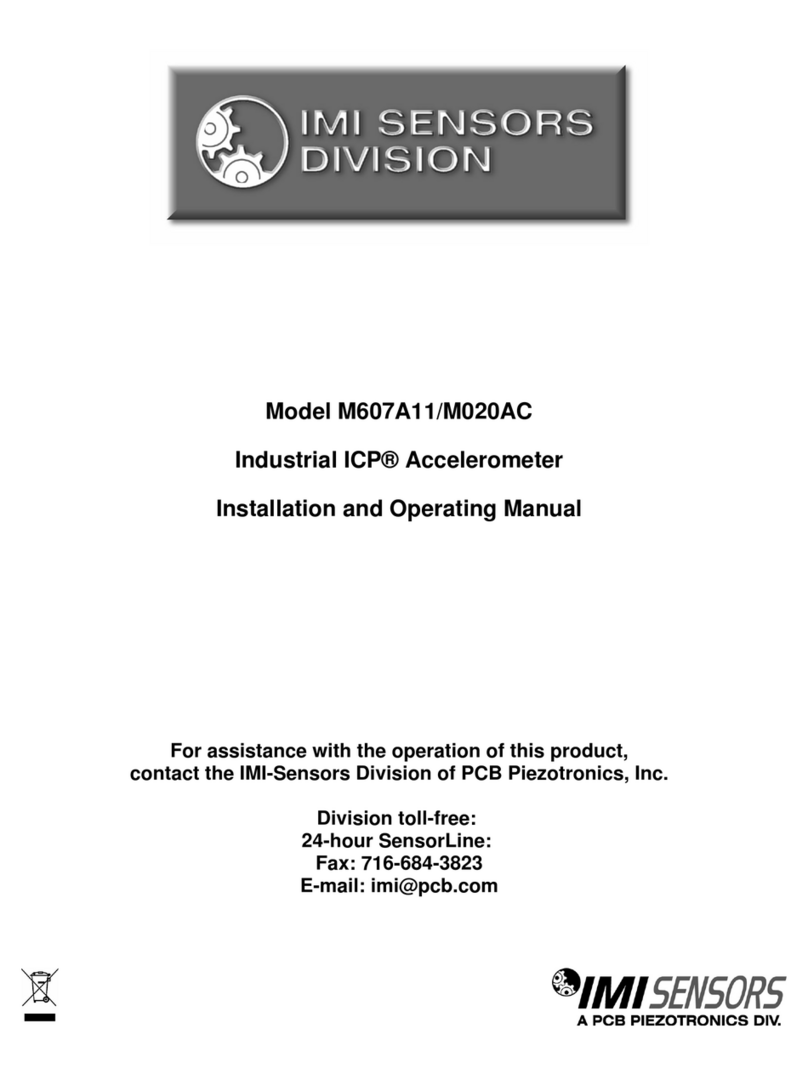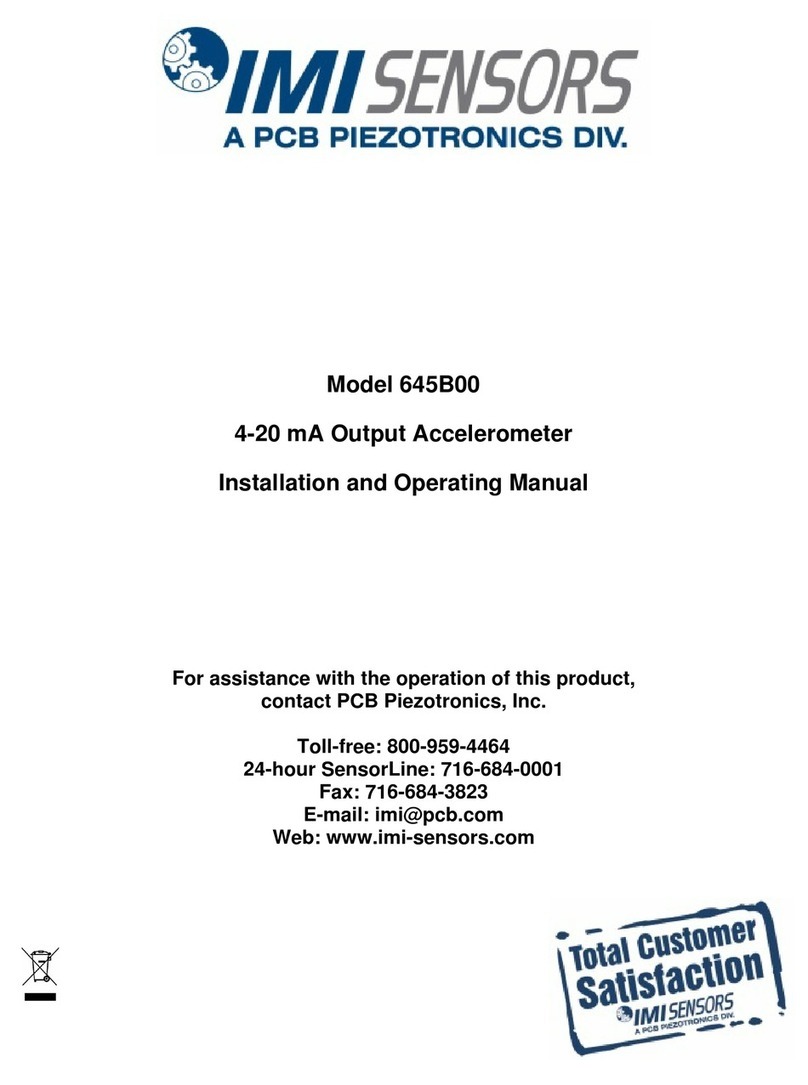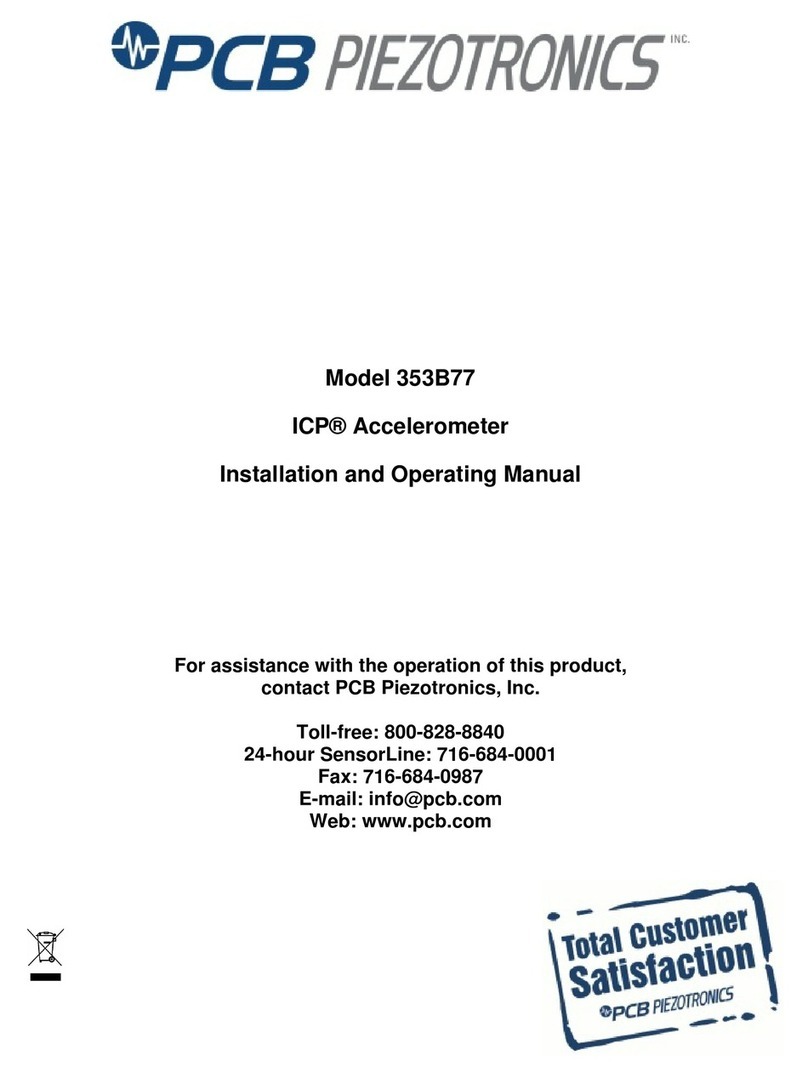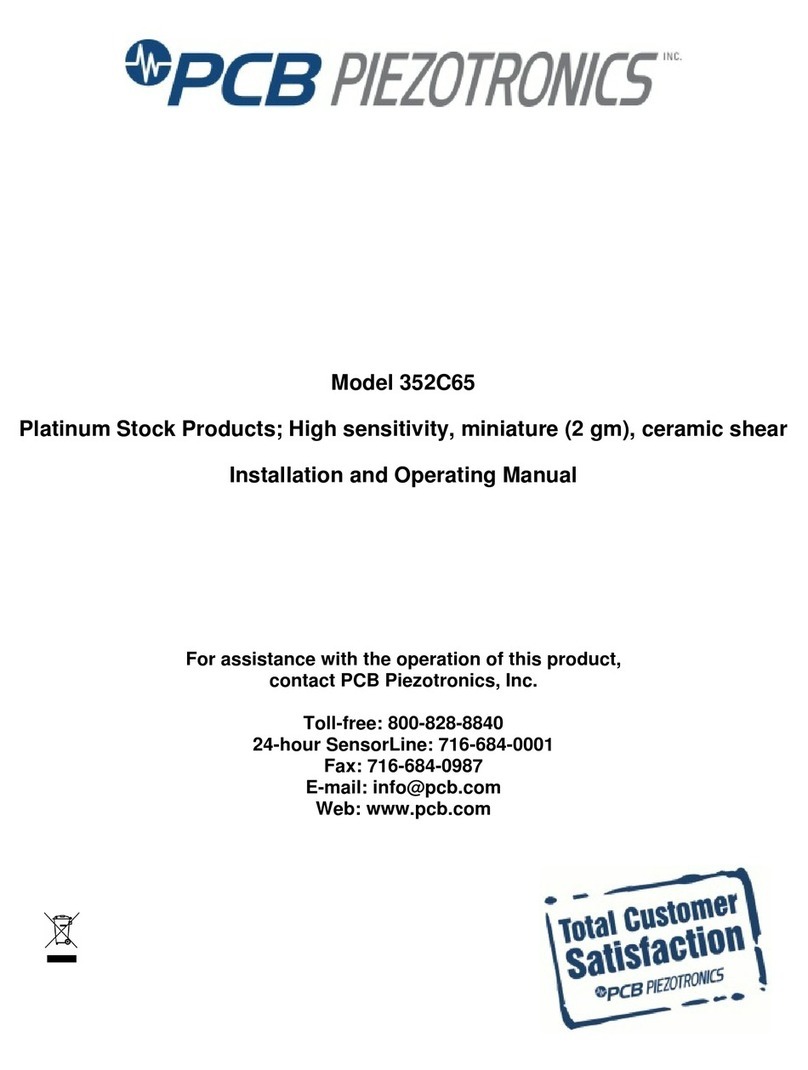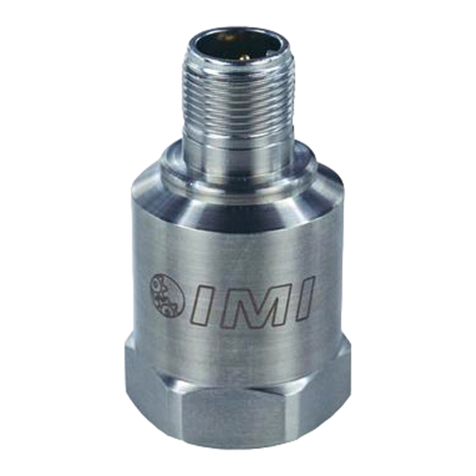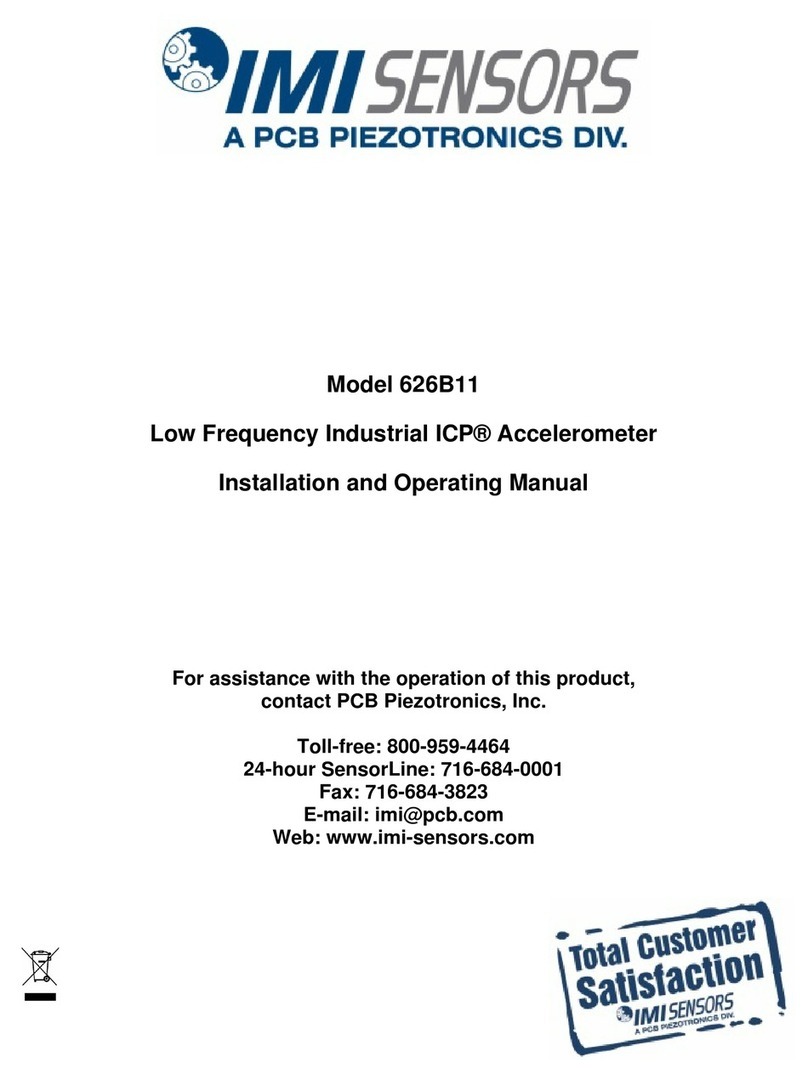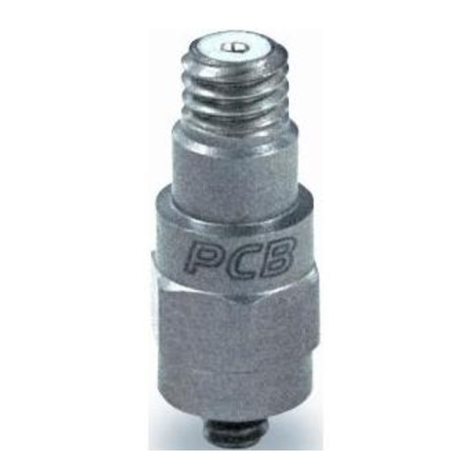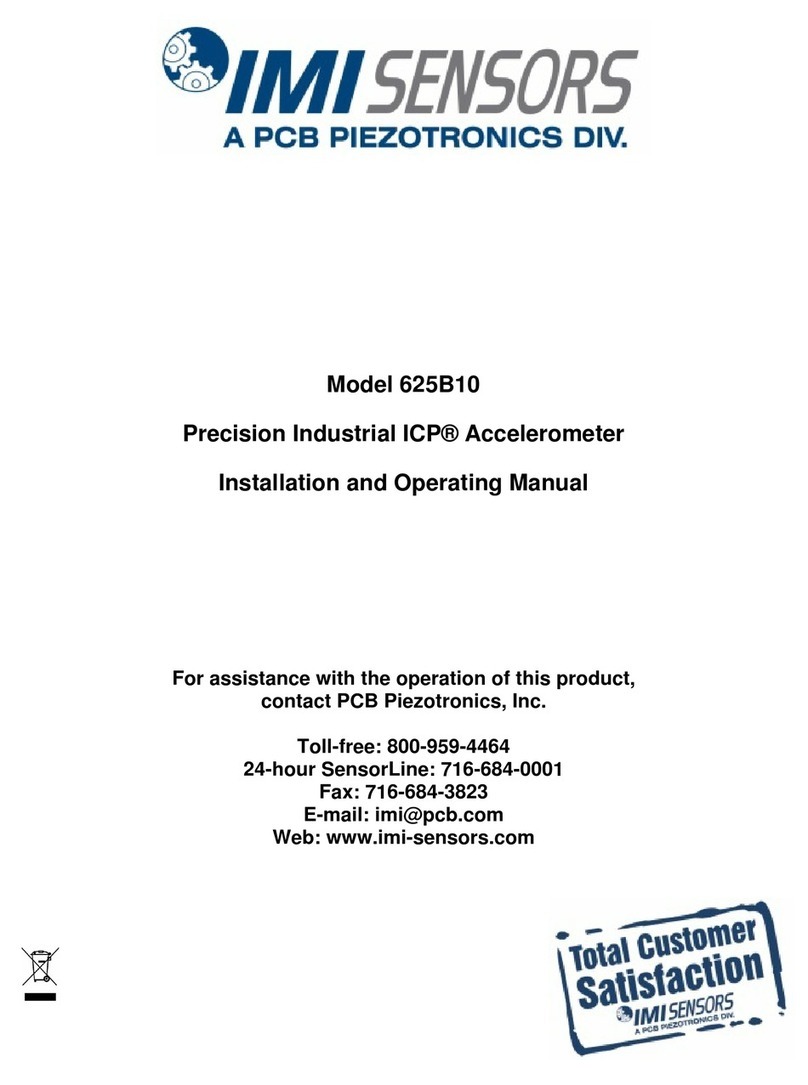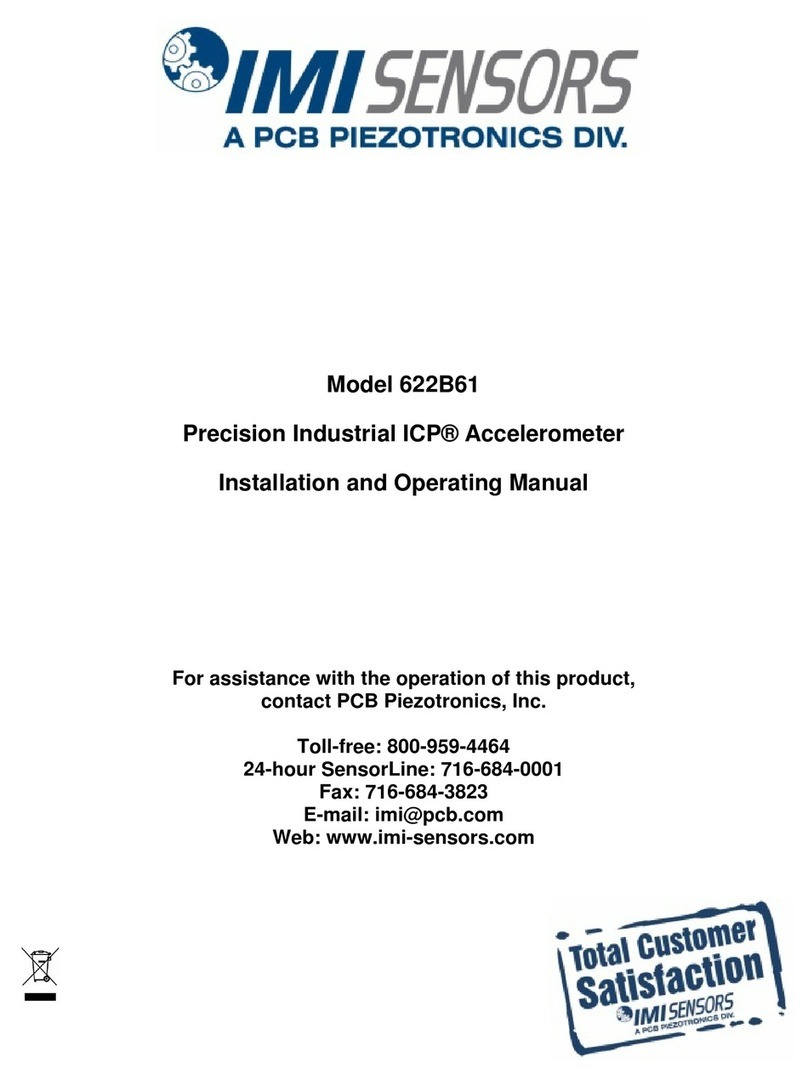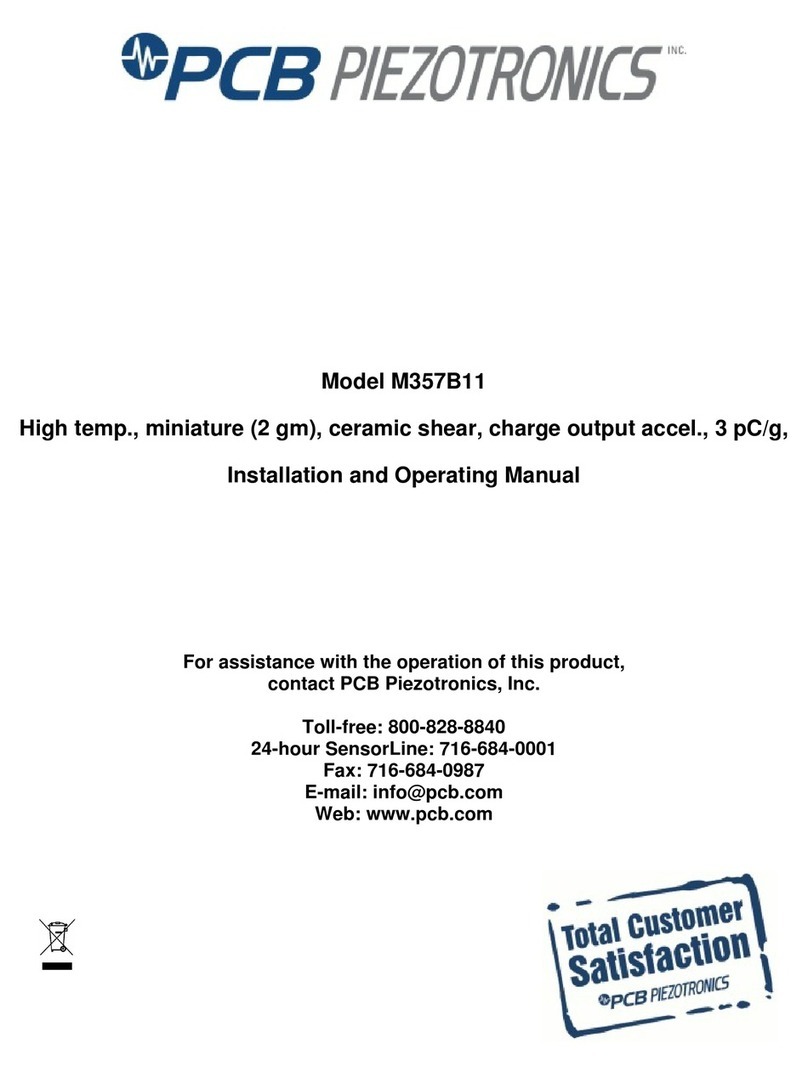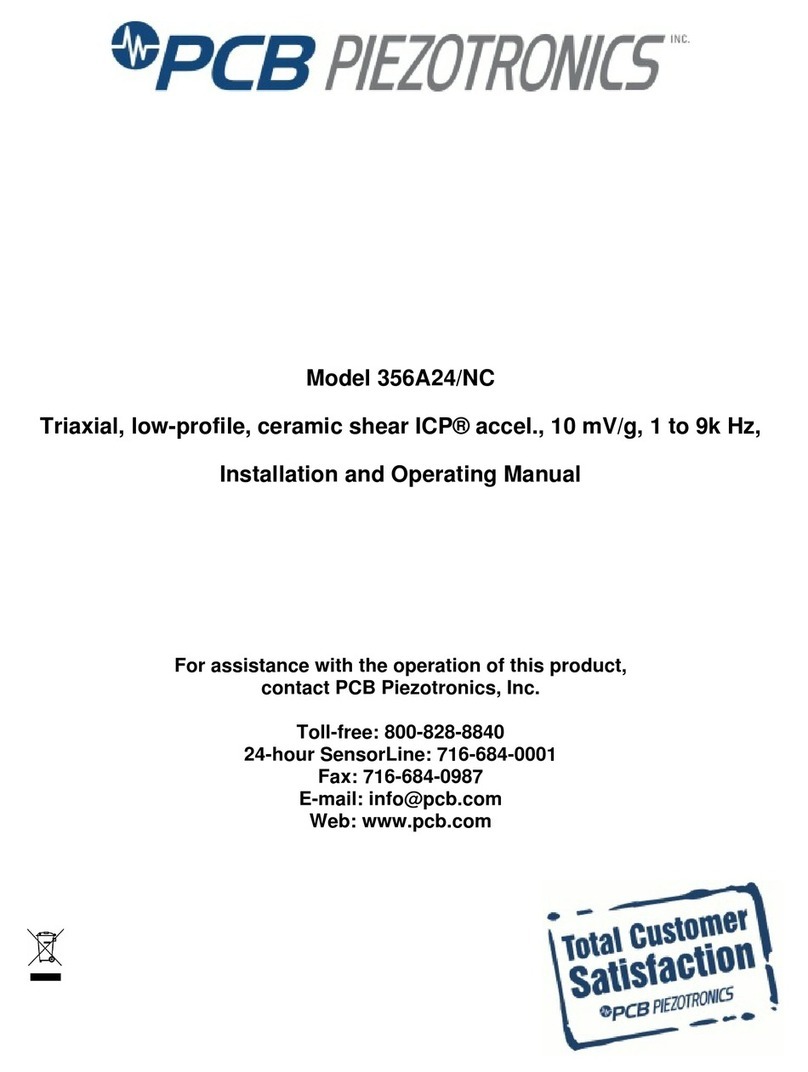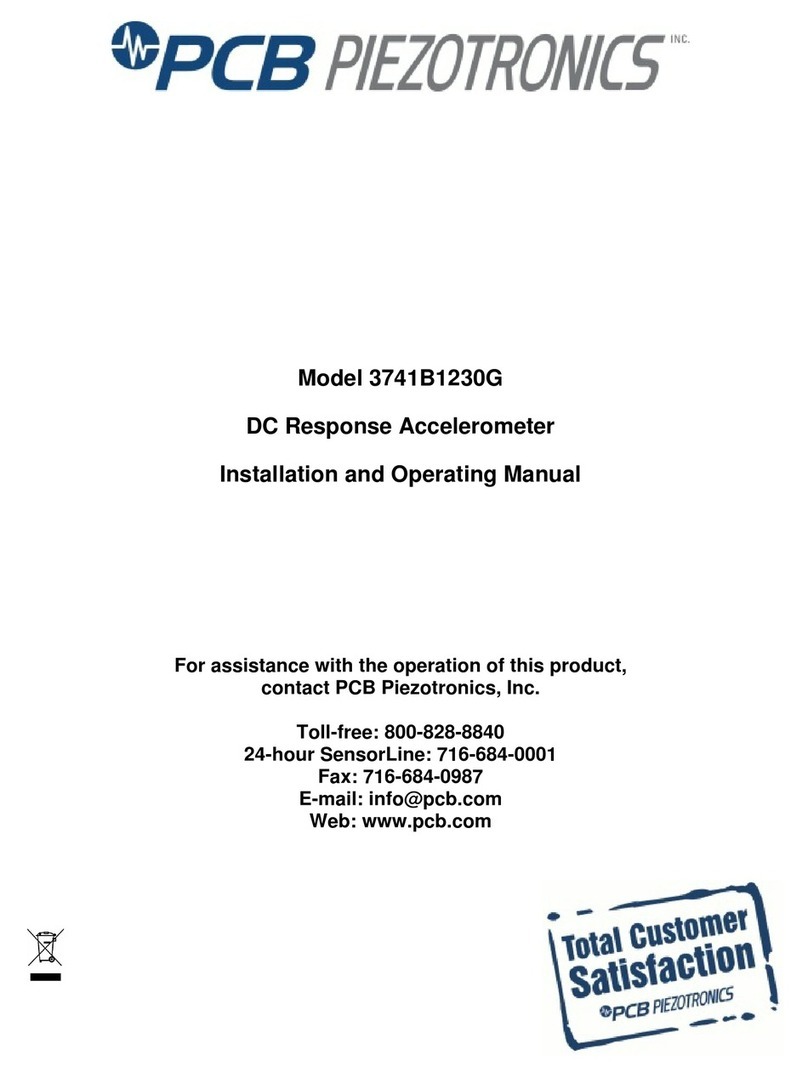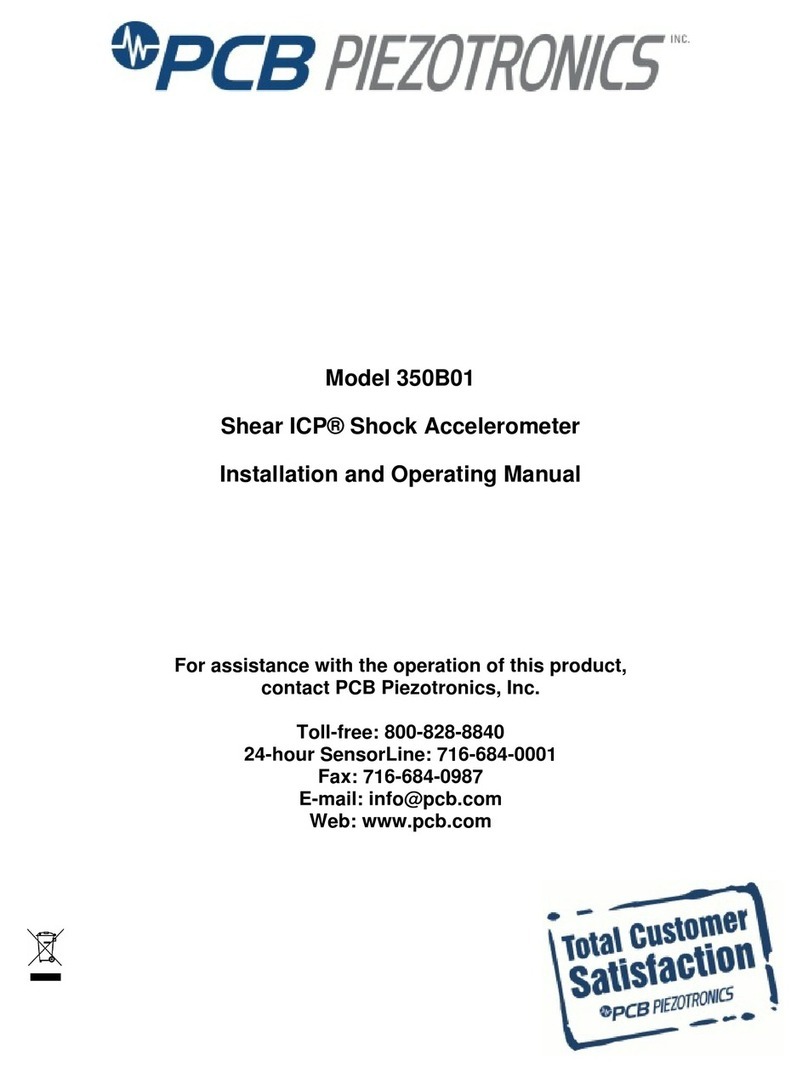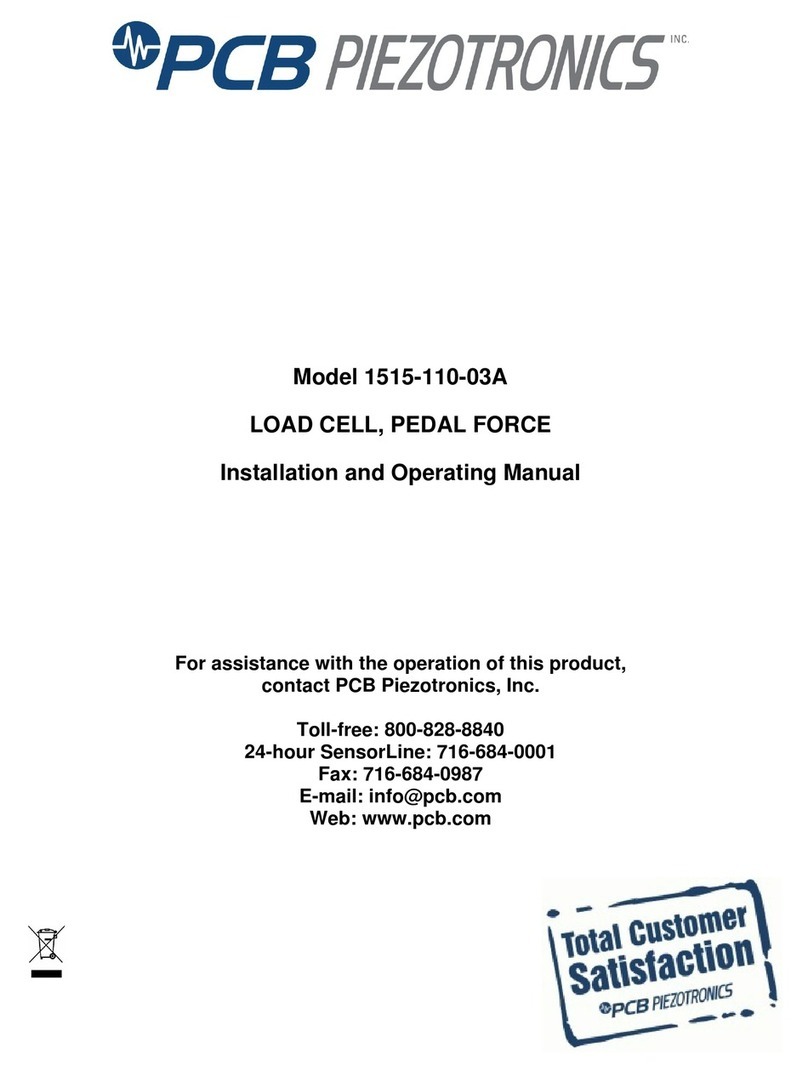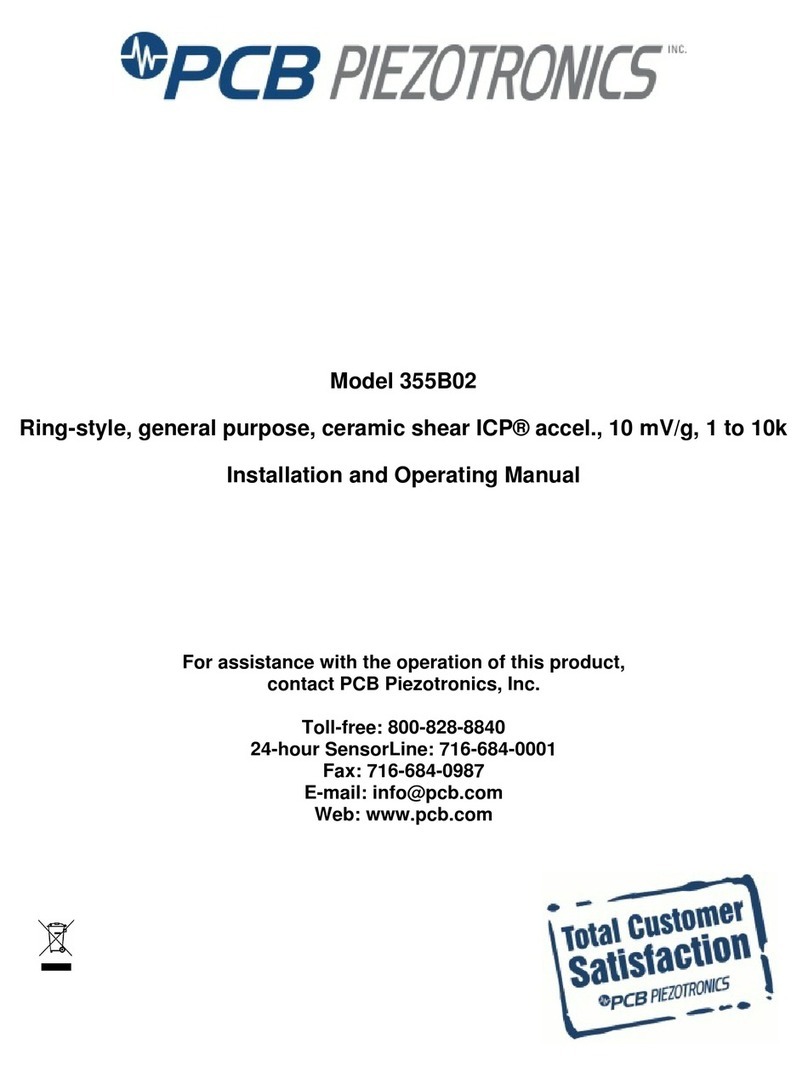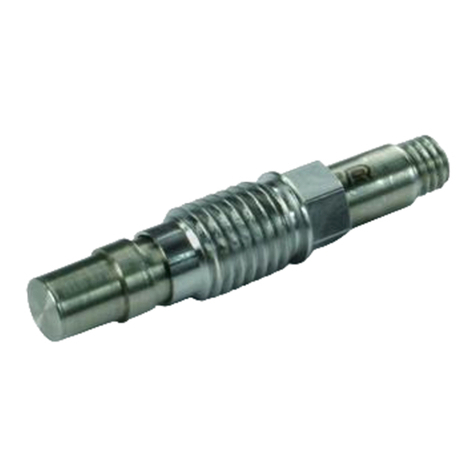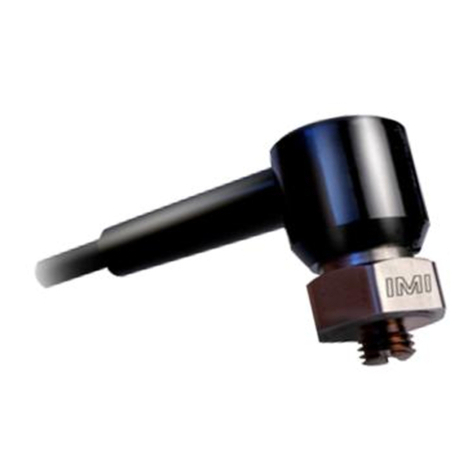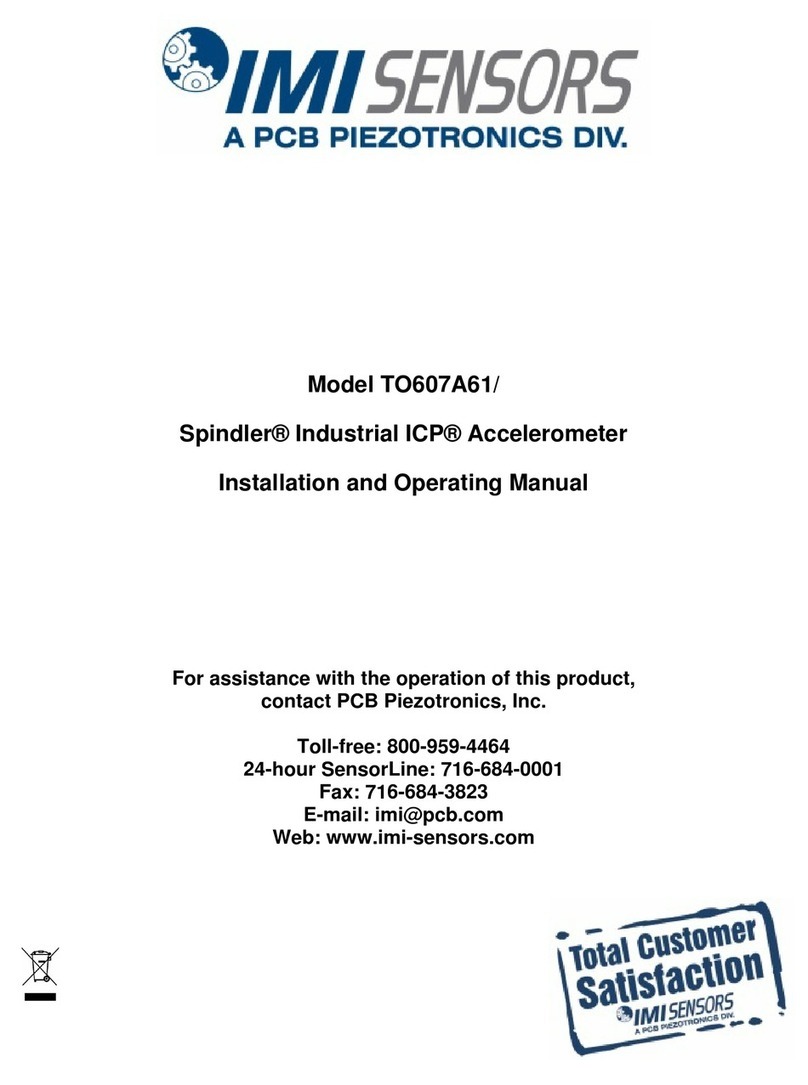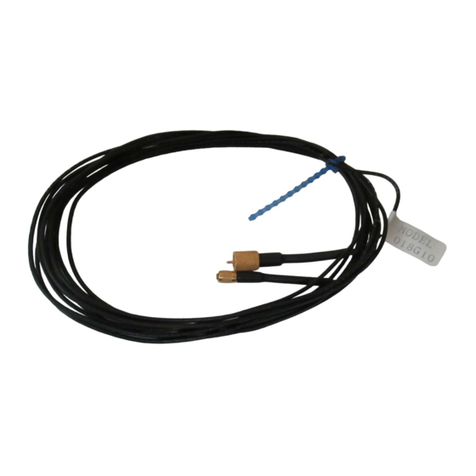
Manual Number: 65247
Manual Revision:
NR
3504 Series Piezoresistive Shock Accelerometer Operating Guide
Figure 6. Direct Adhesive Mounting
5.2-1 ADHESIVE MOUNT REMOVAL (other than wax)
NOTE: A debonder should always be used to avoid sensor
damage.
To avoid damaging the accelerometer, a debonding agent must
be applied to the adhesive prior to sensor removal. With so
many adhesives in use (everything from super glues, dental
cement, epoxies, etc), there is no universal debonding agent
available. The debonder for the Loctite 454 adhesive that
PCB offers is Acetone. If you are using anything other than
Loctite 454, you will have to check with the individual
manufacturers for their debonding recommendations. The
debonding agent must be allowed to penetrate the surface in
order to properly react with the adhesive, so it is advisable to
wait a few minutes before removing the sensor.
After the debonding agent has set, you can use an ordinary
open-end wrench if the accelerometer has a hex base or square
base, or the supplied removal tool for teardrop accelerometers.
After attaching either, use a gentle shearing (or twisting)
motion (by hand only) to remove the sensor from the test
structure.
6.0 Power
Normally PR devices are powered with regulated Excitation,
since the sensitivity is proportional to input voltage. Although
for the 3504 Series the proportionality is very good (due to
minimal self heating of the comparatively high-resistance
elements) generally it is recommended to obtain the calibrated
sensitivity using the intended Excitation voltage. In integrated
applications, in which the data acquisition is powered by the
same voltage that supplies the bridge, it is possible to reduce
the effect of variations in Excitation on overall system
sensitivity by using the excitation voltage as the reference for
the data acquisition.
7.0 Typical Measurement System
The output from the sensor is typically routed to bridge
conditioner then oscilloscopes or various data acquisition
instruments. Consult PCB Application Engineering for
additional signal conditioning options. To take advantage of
the DC response of the accelerometer, the readout device must
be in a DC coupled state. Consult the appropriate
manufacturer or product manual for your readout device for
details.
8.0 Sensor Verification
Generally the ZMO of a PR transducer is a good measure of
the health of the transducer. This is possible using PCB
standard cabling, Input Resistance (from Red to Black) or
Output Resistance (from Green or Yellow to White), but this is
less commonly used to check the condition since resistance
changes with temperature. A thorough check of the health
(suggested both before and after an expensive test) must
include calibration of the sensitivity.
In some laboratories which use piezoresistive transducers, it is
customary to check the continuity and gain of the conditioning
and data acquisition system using a technique called “Shunt
Calibration”. By temporarily unbalancing the bridge with a
shunt resistor placed in parallel with a leg of the bridge
(usually between the “+ Sig” wire and either the “+ Exc” or “–
Exc”), dc shifts of the offset are created. Whereas the process
does not calibrate the transducer, it is a check of system gain,
with accuracy of the resultant dc shift in output dependent on
the degree that the resistances of both the leg of the bridge and
the shunt resistor are accurately known. Among other sources
of variability, temperature can change the value of the
resistors, and therefore the Shunt Calibration output. The user
should be aware that because the 3504 Series are full bridge
transducers, all legs are active and will have temperature
coefficients typical of piezoresistive sensors (approximately
+0.1%/degree C).
9.0 Sensor Calibration
For shock accelerometers, the most appropriate, accurate and
reliable calibration is with a comparison shock using a back-
to-back reference and pneumatic exciter, as described in ISO
16063-22, “Methods for the calibration of vibration and shock
transducers —Part 22: Shock calibration by comparison to a
reference transducer.” PCB offers this calibration as a service.
